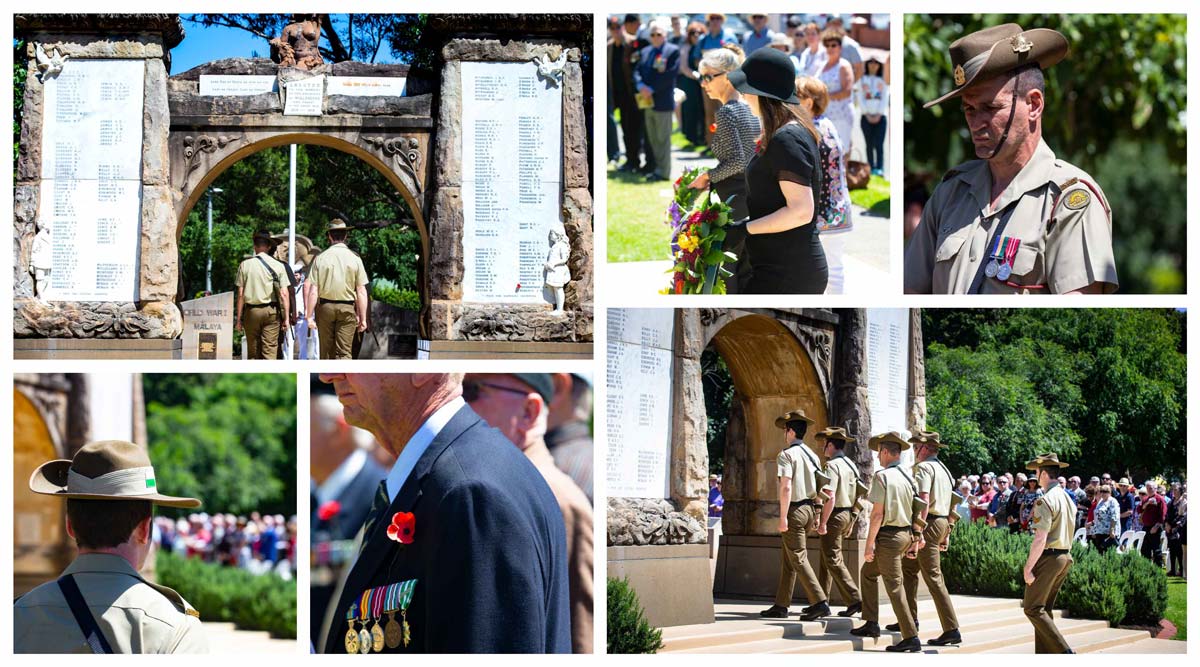November 13, 2018
UOW joins Armistice Day commemorations
Students lay wreaths at ceremonies recognising 100 years since end of World War One
University of Wollongong students joined community Armistice Day Centenary commemorations at the weekend, with UOW student representatives laying wreaths at memorial services in Wollongong and Canberra on Sunday 11 November 2018.
Across Australia, official commemorations brought the nation to a standstill for a minute’s silence and memorial services marking 100 years since the guns fell silent on the Western Front and the horror and bloodshed of the First World War came to an official close on 11 November 1918.
The armistice, signed two days earlier, brought to an end the war that remains the most costly in Australia’s history.
Among the UOW participants, Faculty of Law, Humanities and Arts student, Emma Bellino, laid a wreath on behalf of the University’s Student Advisory Council (SAC) during the memorial service at the Cenotaph in Wollongong’s MacCabe Park while three other SAC members laid wreaths sponsored by the University in the National Commemorations held at the War Memorial in Canberra.
“I chose to be involved in the Remembrance Day service because I believe that it’s important to remember and honour the men and women who have risked, and/or sacrificed, their lives in war and peacekeeping missions,” Emma said.
“In 2014, I had the opportunity to go on a study tour to the Western Front where we saw the battlefields and an enormous number of graves and names of men on walls for the missing. Since then, ANZAC and Remembrance Days have been more meaningful to me.
“Having the opportunity to lay a wreath on this, the 100-year anniversary of Armistice Day and the end of World War One was very special.”
The University’s participation in commemorating the centenary of the World War One Armistice of 1918 comes four years after UOW launched an online exhibition entitled UOW Reflects on the Great War in 2014 to mark the 100th anniversary of the commencement of Australia’s deadliest war.
The interactive exhibit was designed not to proliferate particular nationalist narratives or advance historical or political agendas, but to share local, Illawarra experiences of the war. The intention was to encourage the local community and the institution to respectfully reflect on a momentous part of Australia’s past.
Australia’s population was approximately four million strong at the commencement of the war. 415,000 Australians enlisted from 1914 to 1918. On entry, 20,000 troops were committed to the war, 8,000 of whom would be killed at Gallipoli. More than 36,000 men were killed in France and Belgium in 1916 – 17, and by the end of the war Australia’s casualties totalled 62,000.
Reflecting on the sheer scale of loss, UOW war historian Jen Roberts has noted that “one in five of the men who embarked with the First AIF never came home”. The trauma of the war touched the new federated Australian nation-state as a whole, and it shaped regional and rural communities for years to come.
Ms Roberts wrote that the mass slaughtering of young Australian servicemen “created a measurable impact on their communities for ensuing generations who lived with the memories of loss; their ghosts faintly echo still”.

References
Meleah Hampton, ‘The Key to Victory: Australia’s Military Contribution on the Western Front’, in Kate Arrioti and James E. Bennett (eds), Australians and the First World War: Local-Global Connections and Contexts (Switzerland: Palgrave Macmillan, 2017), p. 27.
Stuart Macintyre, A Concise History of Australia, 4th ed. (Port Melbourne; Cambridge University Press, 2016), pp. 161 – 163.
Australian War Memorial, ‘Honour Their Spirit: Commemorating the Centenary of Armistice 2018’, https://www.awm.gov.au/commemoration/armistice, (accessed: 1 September 2018).
Jennifer Hawksley, ‘“Days of Tears and Longing”: War, Grief and Memory in the Illawarra’, BA (Hons) Dissertation, University of Wollongong, 2004, p. 1.
Hawksley, ‘“Tears and Longing”’, p. 8.
UOW Library, ‘Home Page’, UOW Reflects on the Great War [online exhibition], https://webapps.library.uow.edu.au/digitalcollections/exhibitions/great-war/, (accessed: 5 November 2011).
:format(jpg)/prod01/channel_3/assets/live-migration/www/images/content/groups/public/web/media/documents/mm/uow253284.jpg)